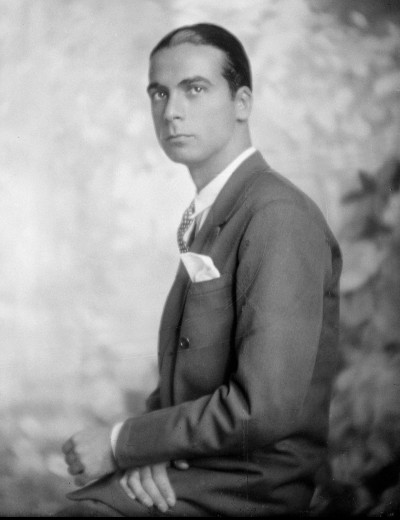
Cristobal Balenciaga
About
Cristobal Balenciaga Eisaguirre was born in 1895 in Guetaria, Spain. He is the creator of some of the most powerful styles of the twentieth century, who has frequently been described as a prophet. How he pictured the female form and how he used that shape as a jumping- off point resulted in some of the most dramatic shifts in silhouette to follow Christian Dior’s postwar New Look.
After apprenticing with tailors in San Sabastian and Madrid, he opened his own couture salon in San Sabastian in 1915, frequently travelling to Paris to purchase couture dresses to study and to sell. Eventually he opened two more houses in Spain, naming them after his mother, Eisa. This was run by his sister from 1948 to 1968 when it closed. In 1935 he opened his Barcelona salon.
He left Spain when the civil war broke out and established himself in Paris where he opened an haute couture house in August 1937. From the start, a style was created which lived up to its expectations for thirty glorious years.
1938 The Duchess of Westminster ordered a pink jersey dress, and the American buyers ordered many of his gowns. Within a year, his name was heard everywhere.
In 1947 Balenciaga made women’s suits in a new “Barrel” style. He developed a narrow, straight “I-shaped” line, which influenced other designers.
Balenciaga hated the fashion press and publicity, and from 1957 denied them entry to his collections. He held his shows a full month after all the other couturiers. He hated the idea of working to please a voracious press that demanded new ideas with every collection. He did not work that way. He refined his ideas with every collection, increasing the level of excellence.
He trained Givenchy, Courreges, Ungaro and others and they even now, regard him as their mentor.
In 1957 he invented the Trapeze line for dresses and one year lager her introduced the Empire line and designed the “Pillbox” hat.
In the 60's he was not as popular as he once was and he was not interested in going into pret-a-porter as many designers did. So in 1968 he retired which was a great surprise to everyone. He made only one more creation, the wedding dress of the Duqesa de Cadiz in 1972.
Balenciaga’s clientele was comprised of some of the most distinguished people of his day, from social arbiters Pauline de Rothschild, Bunny Mellon, Mrs. Arturo Lopez-Willshaw, and the Duchess of Windsor, to people in the arts like Clare Booth Luce, Rosamund Bernier, Diana Vreeland, Anita Loos, Inge Morath, and even Yul Brynner.
In 1974, after working in Paris for 30 years, he decided to retire and closed his fashion houses in Paris, Barcelona and Madrid, one after the other.
Balenciage died on March 24 1972 in Valencia,Spain.
The Look
Balenciaga was revered by his fellow designers. They called him "The Master" because he created some of the most powerful styles of the twentieth century. His designs were admired fort he sophisticated, timeless style and cut. His work was both austere and extravagant, focusing on proportion and making certain that the cut of the cloth followed the lines of the body, always allowing freedom of movement. His daywear dresses, suits, and even hats were simple, practical and elegant. His evening designs allowed room for frivolity, using elaborate fabrics, heavy beading, feathers, and wide, puffy skirts. Many of his designs were inspired by Spanish regional dress and influenced by paintings of the old Spanish masters. The sleeve He was always fanatically precise about sleeves. He himself cut them mathematically and would never allow a less than perfect sleeve to leave his salon on anybody, even visitors. The perfect sleeve should be a living sculpture, beautiful to behold, a discreet play of subtle folds ensuring total comfort. Many people who came to his salon, had their coats snatched away by the Master for improvements to the sleeves. These included the wife of the Spanish Ambassador, Hubert de Givenchy and Bettina Ballard. The colours Black was very evident, the black of Spain, so deep in tone that all other blacks looked grey beside it. He used all the browns, from chocolate to nutmeg, palest aquamarine, ice or hot pink, goldenrod, peacock blue, melon orange and teal green. He rarely used printed fabrics, preferring embroidery or sequins.
Who Wears It
His most faithful clients included : the Queen of Spain, the Queen of Belgium, the Duchess of Windsor, Princess Grace of Monaco, all regularly recognized in the press as the best-dressed women in the world. On March 24, 1972, the undisputed Master of all the great couturiers - the man who inspired GIVENCHY, UNGARO, SCHERRER, COURREGES and many others - passed away in Valencia